
travellers can still use the writer’s letters as travel guides, though he never intended them to be.
[caption id="Followingdanieldefoeacrossenglandssouth-westcoast_Feature" align="aligncenter" width="600"]

PRIVATE COLLECTION/BRIDGEMAN ART LIBRARY
[caption id="Followingdanieldefoeacrossenglandssouth-westcoast_img1" align="aligncenter" width="446"]
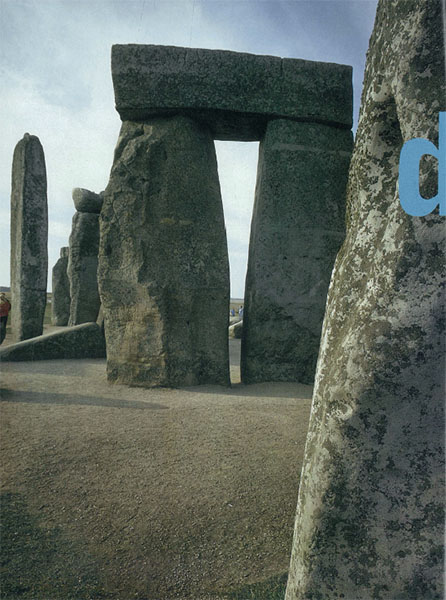
defoe Road runs through an area in Stoke Newington in North London
stonehenge
“The next day [I] tpok another short tour to the hills, to see that celebrated piece of antiquity, the wonderful Stone-Henge… I shall suppose it, as the majority of all writers do, to be a monument for the dead, and the rather, because men’s bones have frequently been dug up in the ground near them.” where novelist Daniel Defoe lived in two separate houses from 1709 to 1729. One of the houses still stands and bears a blue plaque attesting to the famous author’s residency. Foe, later changed to Defoe, was born in London in 1660, though the exact date is unknown. He tried and failed at a number of business ventures, but he was first and foremost a writer, and his literary masterpieces have endured.
His classic novels include Robinson Crusoe, published in 1719 and arguably the first great English novel, and Moll Flanders, published in 1722. He composed these tales using simple prose and focusing on realistic characters in believable situations. Today, they are familiar to readers throughout the world. However, his 13 letters that comprise A Tour Through the Whole Island of Great Britain, written between 1724 and 1726, have a smaller audience.
Defoe was one of the earliest travel writers, and though he did not mean for his letters and essays to be used as guidebooks, they offer itineraries that a new generation of travellers can still follow. Defoe meant for these writings to focus on England’s wealth and prosperity and, in particular, the inland trade that had made Britain “the most flourishing and opulent country in the world.”
Recently my husband, Dick, and I retraced Defoe’s steps from London to Land’s End as we made our way across the southern part of England into the West Country. While we covered the distance considerably faster and more comfortably than Defoe, we caught glimpses of what he must have witnessed.
Equipped with a paperback copy of Defoe’s A Tour that had town names and passages highlighted in yellow, we started out from London with the market town of Salisbury, about two hours away, as our first destination.
Of the many beautiful cathedrals throughout England, Salisbury ranks among my favourites. Years before I actually saw it, I felt I knew it from its representations in the stunning paintings of John Constable. Salisbury Cathedral with its towering spire, the tallest in England, dominates this 13th-century town lined with quaint old streets. Defoe called the cathedral “the handsomest in England.” We saw an especially beautiful view of it from nearby St. Ann’s Gate. Picturesque old houses surround the cathedral and form the Close. Defoe said of the Close, “… the place [is] so large, that it is (as it is call’d in general) like another city.” The Close also served as a model for Victorian novelist Anthony Trollope’s Barchester tales.
We found a superlative place for a traditional Wiltshire cream tea in the Michael Snell Tea Rooms, housed in a former school at 8 St. Thomas’s Square. We dashed into Beach’s, a wonderful second-hand bookshop on the High Street, before making a side trip to Stonehenge.
Stonehenge, only ten miles away and England’s most famous stone circle, was built more than 4,000 years ago. These days the monument is roped off, but it is still worth paying the entry fee to get as close to the huge stones as possible. Defoe ill commented, “… how they came hither, or, from whence, no stones of that kind being now to be found in any part of Engnland near it, is still the mistery, ….”
[caption id="Followingdanieldefoeacrossenglandssouth-westcoast_img2" align="aligncenter" width="359"]
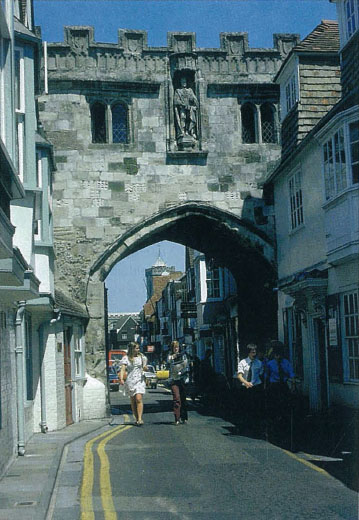
WWW.BRITAINONVIEW.COM
salisbury
“Salisbury itself is indeed a large and pleasant city; tho’ I do not think it all the pleasanter for that which they boast so much of; namely, the water running thro’ the middle of every street ….”
With Defoe as our guide, we entered the serene and beautiful English countryside of Dorsetshire and Devonshire through the pretty town of Dorchester, where Emma was filmed on location a few years ago, into Bridport, where Defoe marvelled at the method used to catch “mackerell.” He found Bridport otherwise unremarkable, but we decided to stop in the medieval town in order to stay in the Vivat Trust property there. The Trust rescues old buildings and turns them into short-term holiday accommodation of the pighest quality. We settled into The Chaptry, a stone building dating from about 1300 that stands almost in the centre of today’s modern town, though located on one of Bridport’s oldest streets. The Trust retained the building’s historic exterior and elements of its interior, but its rooms, on three levels, have been lavishly transformed into comfortable elegance for today’s travellers. It is surely a treat to “live here,” even if for just one night.
[caption id="Followingdanieldefoeacrossenglandssouth-westcoast_img3" align="aligncenter" width="355"]
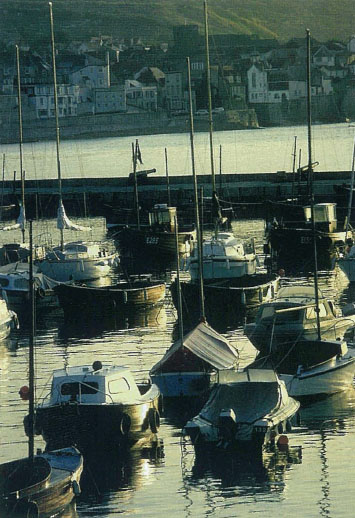
WWW.BRITAININVIEW.COM
Iyme regis
“While we stay’d here some time viewing this town and coast, we had opportu1ty to observe the pleasant way of conversation, as it is manag’d among the gentlemen of this county, and their families, which are without reflection some of the most polite and well bred people in the isle of Britain …. “
Bridport remains a historic market town with streets that are among the widest in the west of England, a remnant of the rope-making industry that began in 1213 when King John ordered the village to produce ropes night and day. We left busy East Street to pop into the Green Yard Cafe on Barrack Street for a pleasant lunch with brightly coloured pottery adorning the tables and local artwork on the walls.
Just west of Bridport along the A35 we came to the enchanting seaside town of Lyme Regis with its strong associations with another Victorian novelist, Jane Austen. The seawall known as The Cobb is remarkable to see and figures prominently iriJohn Fowler’s The French Lieutenant’s woman and in Austen’s final novel Persuasion. Defoe describes it at some length in his letters and concludes that the harbour with its seawall “ … ‘tis such a one as is not in all Britain besides, if there is such a one in any part of the world.”
[caption id="Followingdanieldefoeacrossenglandssouth-westcoast_img4" align="aligncenter" width="600"]
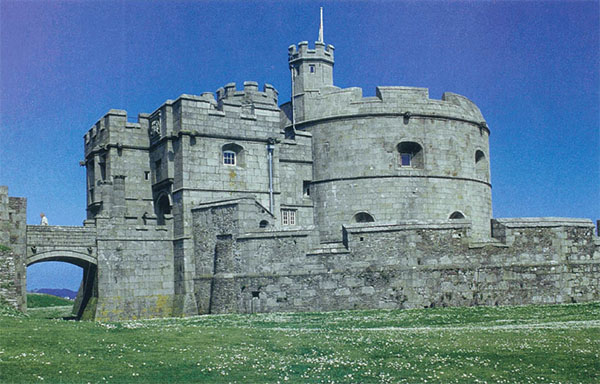
WWW.BRITAININVIEW.COM
penndennis castle
“Pendennis Castle is strong by land as well as by water, is regularly fortified, has good out works, and generally a strong garrison …. “
A brisk walk along the famous waterfront of Plymouth, our next brief stop, offered superb views over the sound before entering into the area of Cornwall at the extreme south-western tip of England, the “toe” of the country. This part of England has retained a distinctive flavour with its own dialect, its own foods and industries.
Cornwall is a region of contrasts. Rugged rock-strewn beaches battered by wild Atlantic waves blend into lush areas where wild flowers bloom all year long. High, remote moorland vies with sheltered creeks and coves along its winding coastline.
Fowey, with its narrow streets and whitewashed houses, has remained unspoiled over the years and Defoe would probably have little trouble recognizing it. Did he also climb to the top of St. Catherine’s Point to be rewarded with a stunning view of the harbour? Of course, he would have known St. Catherine’s Castle, which Henry VIII erected in the 16th century to defend the coastline. It was later restored in 1855.
Defoe mentions Fowey only briefly, but Daphne du Maurier, who lived there for some 60 years, used the town as the setting for much of her fiction, including the novel Rebecca. The Manderley of that story is actually Menabilly, a 17thcentury manor house set on a magnificent estate outside Fowey.
WE CONTINUED ALONG THE COAST in Defoe’s footsteps the following day, arriving in Falmouth. Its older section, situated on a small peninsula, overlooks the inner harbour. The newer part of the town contains most of the hotels. The ruins of Pendennis Castle overlook this holiday resort, yachting centre, and ancient port. Defoe, who frequently commented in his letters about England’s defences, seemed greatly impressed by this fortification. Built in 1540 to guard the harbour entrance, it still provides an exquisite view from the roof of the keep across the channel to the port of St. Mawes. The new National Maritime Museum dazzles with its harbour location and exhibitions and offers another excellent reason for visiting this area.
[caption id="Followingdanieldefoeacrossenglandssouth-westcoast_img5" align="aligncenter" width="277"]
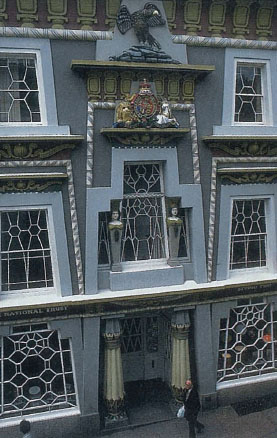
WWW.BRITAINONVIEW.COM
penzance
“So rich, so valuable a treasure is contained in these parts of Great Britain, tho’ they are supposed to be so poor, because so very remote from London, which is the centre of our wealth.”
Our final destination along the Channel coast was Penzance, a pretty town with winding streets that Gilbert and Sullivan celebrated in their operetta of the same name and du Maurier romanticized in her novel Frenchman’s Creek. It is the most westerly town in England and offers interesting sights, including the Egyptian House on Chapel Street with its flamboyant façade dating back to about 1830, though later restored by The National Trust. Penzance also provides a good base from which to explore Land’s End, the Lizard peninsula, St. Michael’s Mount, the old fishing ports and artists’ colonies of St. Ives, Newlyn, and Mousehole, and even the Isles of Scilly. One of our favourite places to stay in this part of England is the Abby Hotel on a narrow side street overlooking the harbour.
From Penzance, Dick and I travelled a short distance for a day visit to St. Ives, a village of cobblestone streets and quaint cottages. Its branch of the Tate Gallery and its Barbara Hepburn Museum provide hours of pleasure. We also visited the fairly new, and very popular, Eden Project in St. Austell with its climate controlled domes. And, of course, we walked and walked parts of the coastal path.
LITERARY TOUR
Read about Johnson and Boswell’s tour of the Hebrides in the April/May 200 I issue, available to order on the Back Issues page of BritishHeritage.com.
MOST VISITORS TO CORNWALL visit Land’s End, but be forewarned that to do so you have to walk through a dreary compound of refreshment stands and souvenir stalls. However, there is plenty of natural splendour once you reach the isolated rocky cliffs. There is a tremendous feeling of awe when you realize you are really at Land’s End with only the Atlantic Ocean in front of you and as far as the eye can see. This view cannot have changed that much sfnce Defoe’s time.
land’s end
“I am now at my journey’s end … as I have coasted the south coast to the Land’s End … “
Like Defoe when he followed this particular journey, we decided to leave a visit to the Isles of Scilly for another time We returned to our rental car and headed for the train that would carry us the 320 miles back to London and Heathrow Airport for our flight home.
In 1711, Defoe wrote “I have, within these twenty years past, travelled, I think I may say, to every Nook and Corner of that part of the island, called England ….” and Dick and I did justice to as much of this part of the country as we could manage in a brief time.
Now this was a journey that Defoe would have enjoyed.
JENNIFER DORN writes exclusively about the U.K. and is known for the day-byday itineraries she creates for guests of Tophams Belgravia Hotel.





Comments